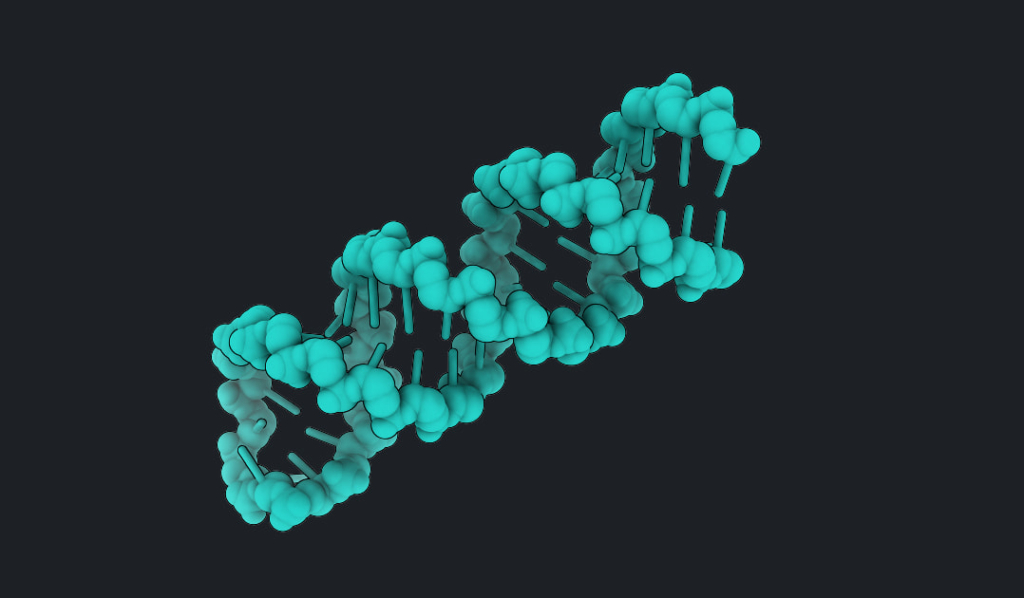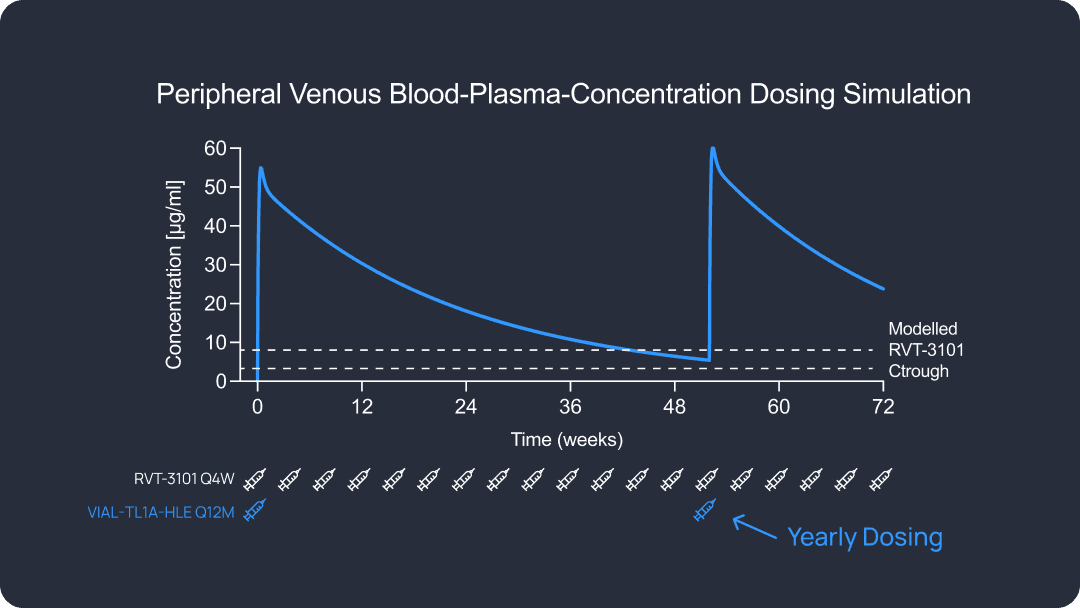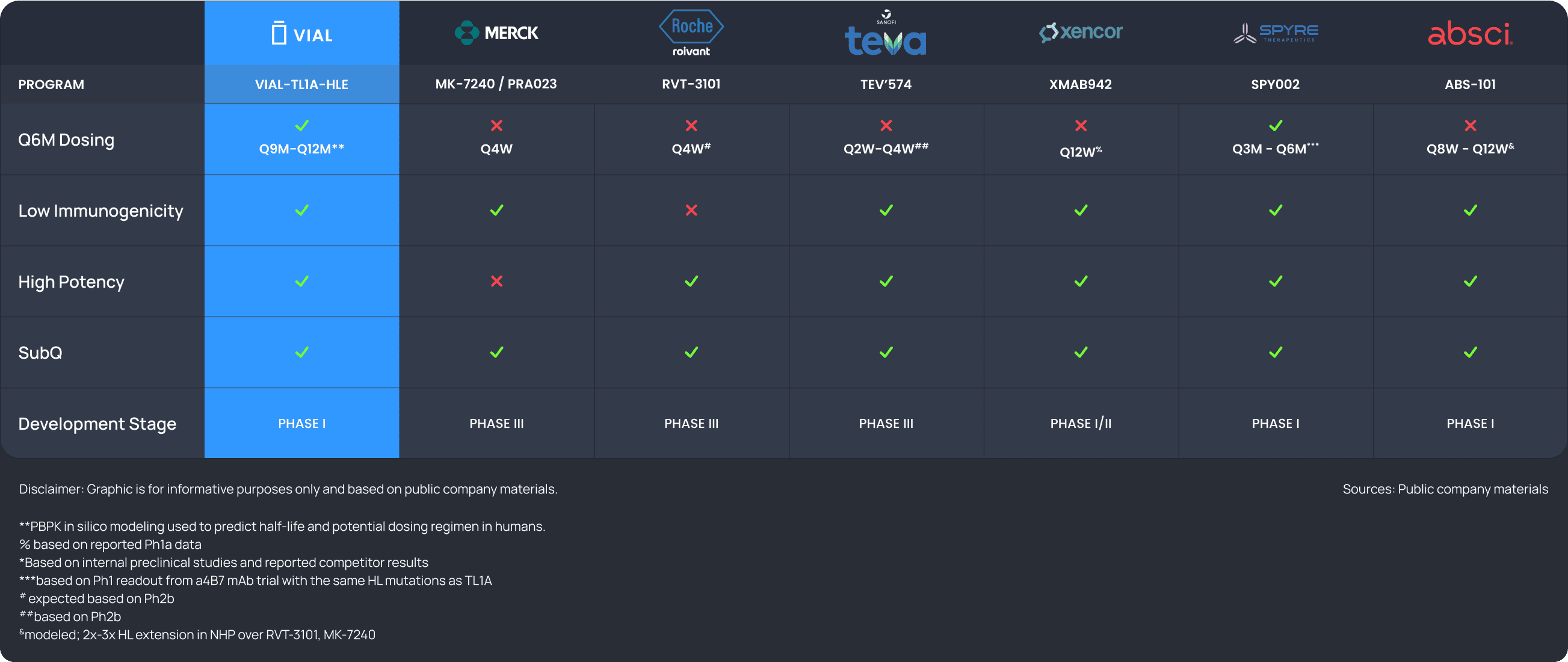TMPRSS6

- VIAL-TMPRSS6 siRNA designed to knock down TMPRSS6.
- Entering IND-enabling studies in Q3 2025.
- Phase I initiating in Q1 2026.
Key Data
Preclinical data indicate a best-in-class dosing interval for patient convenience and efficacy compared to the first and second-generation anti-TL1A candidates.

- TMPRSS6 loss of function is genetically validated to improve iron homeostasis.
- Reduced TMPRSS6 activity raises hepcidin, improving iron balance and protecting against overload.
- Loss-of-function variants in the TMPRSS6 gene are associated with low hemoglobin and iron deficiency anemia.
- VIAL-TMPRSS6 is progressing to demonstrate an equal-or-better profile across potency, dosing frequency, and safety compared to other assets in development for PV.
- VIAL-TMPRSS6 demonstrated superior stability in NHP liver lysates (S9 fractions) suggesting improved knockdown durability and the potential for less frequent dosing.
VIAL-TMPRSS6 did not trigger significant cytokine release in human PBMCs, indicating minimal immunostimulatory activity and supporting a low risk of immunogenicity and favorable safety profile.
Differentiated Product Profile
VIAL-TL1A-HLE is potentially a best-in-class anti-TL1A mAb with an extended half-life to support Q9-12M dosing, powered by Vial’s HLE platform. The program is also applicable to MASH, Atopic Dermatitis, SSc-ILD, Rheumatoid Arthritis, Hidradenitis Suppurativa, among others.

Updates
So 1st of all, TL1A Is one of the hot targets at the moment for both Crohn's and Uc. And one of the major challenges that we have in the clinic is to have drugs that need frequent administration and patients like to have drugs that are very effective and that are super safe, and that are easy to administer.
So instead of every 2 weeks, every month, having an injection every 6 months, or once a year, with a very safe mechanism of action. I mean, this is the ideal thing to have for a patient perspective and also for a doctor.
A long half-life reduces the burden on the patient hopefully provides a very steady state concentration of drug and binding of the target over the extended half-life, which in theory should be very good at preventing episodic flares.
I mean, IBD is a lifelong condition that requires long-term management. Many patients struggle with treatment, fatigue, adherence, challenges, and disruptions in daily life. So an extended half-life TL1A therapeutic, especially one with the potential for once yearly dosing, could significantly improve the quality of life, of reducing injection burden, minimizing clinic visits and maintaining consistent disease control.